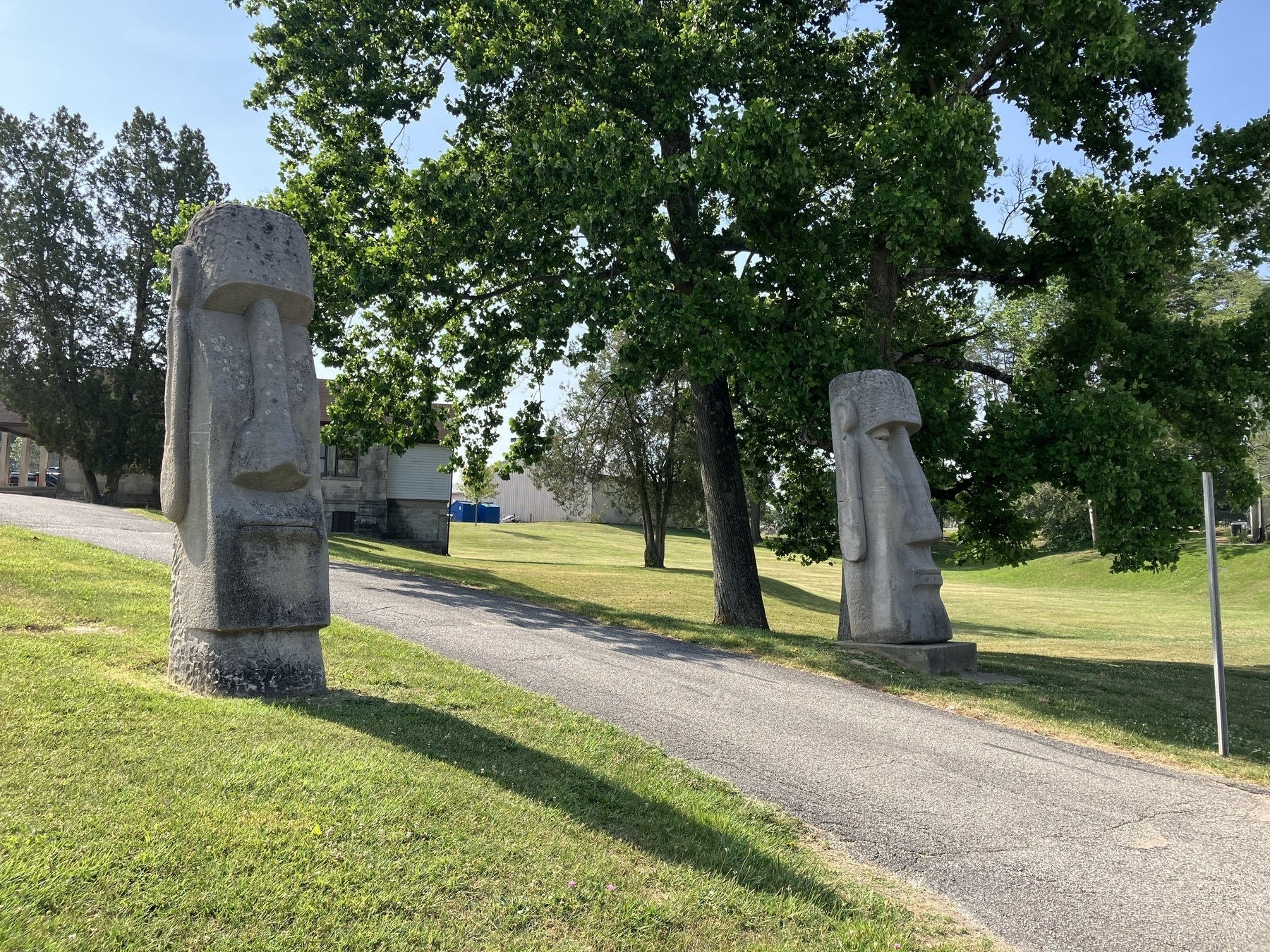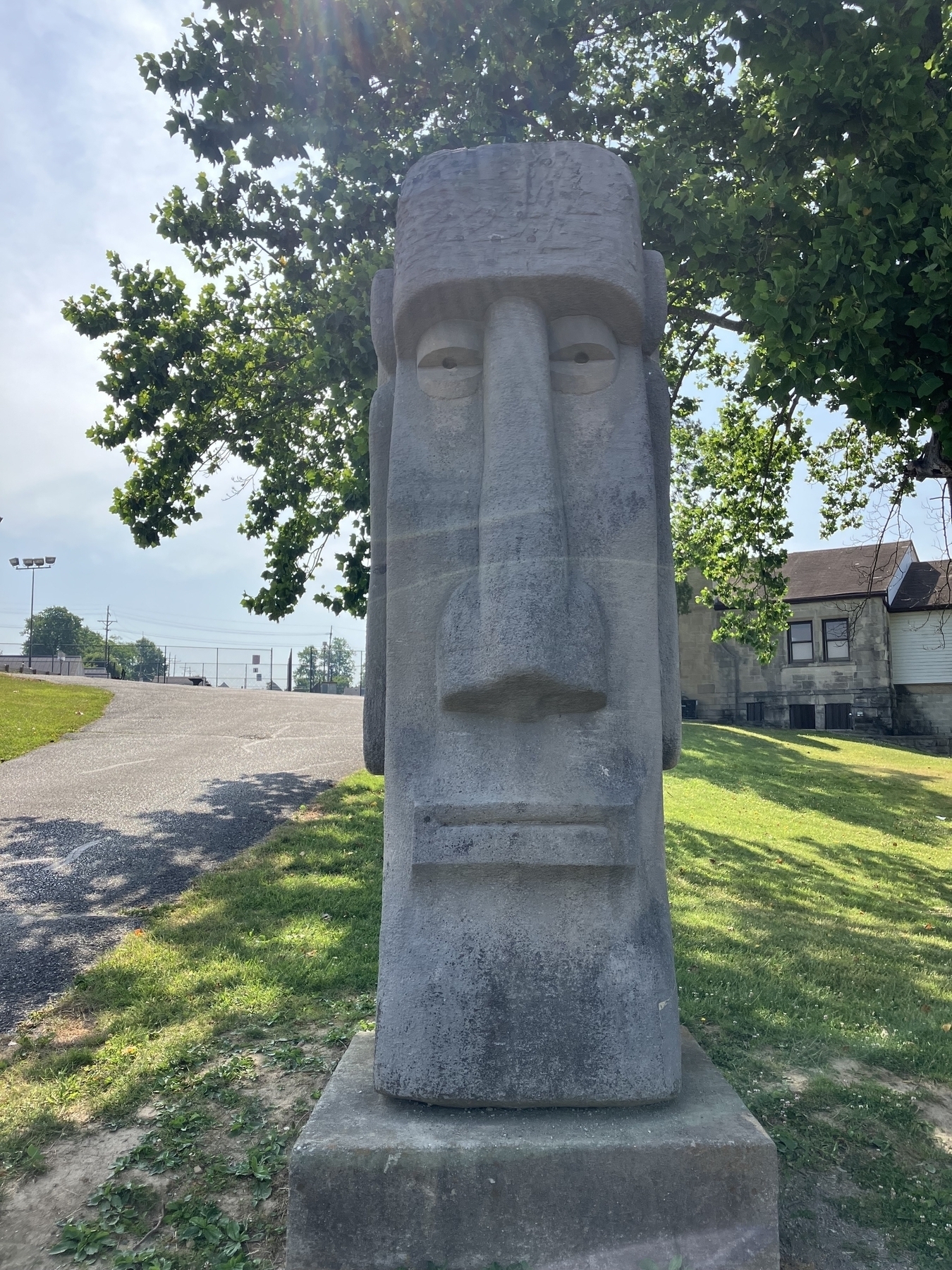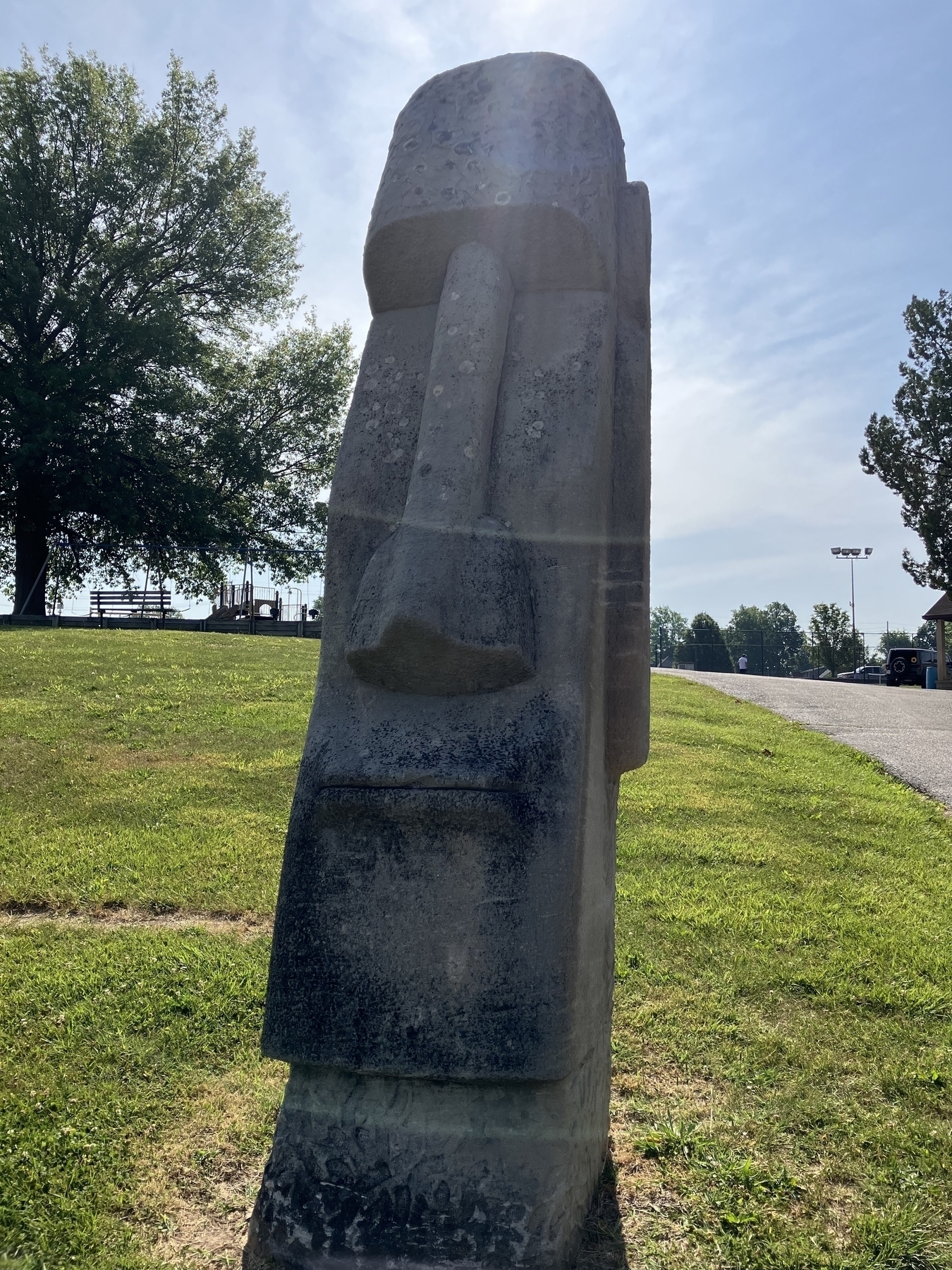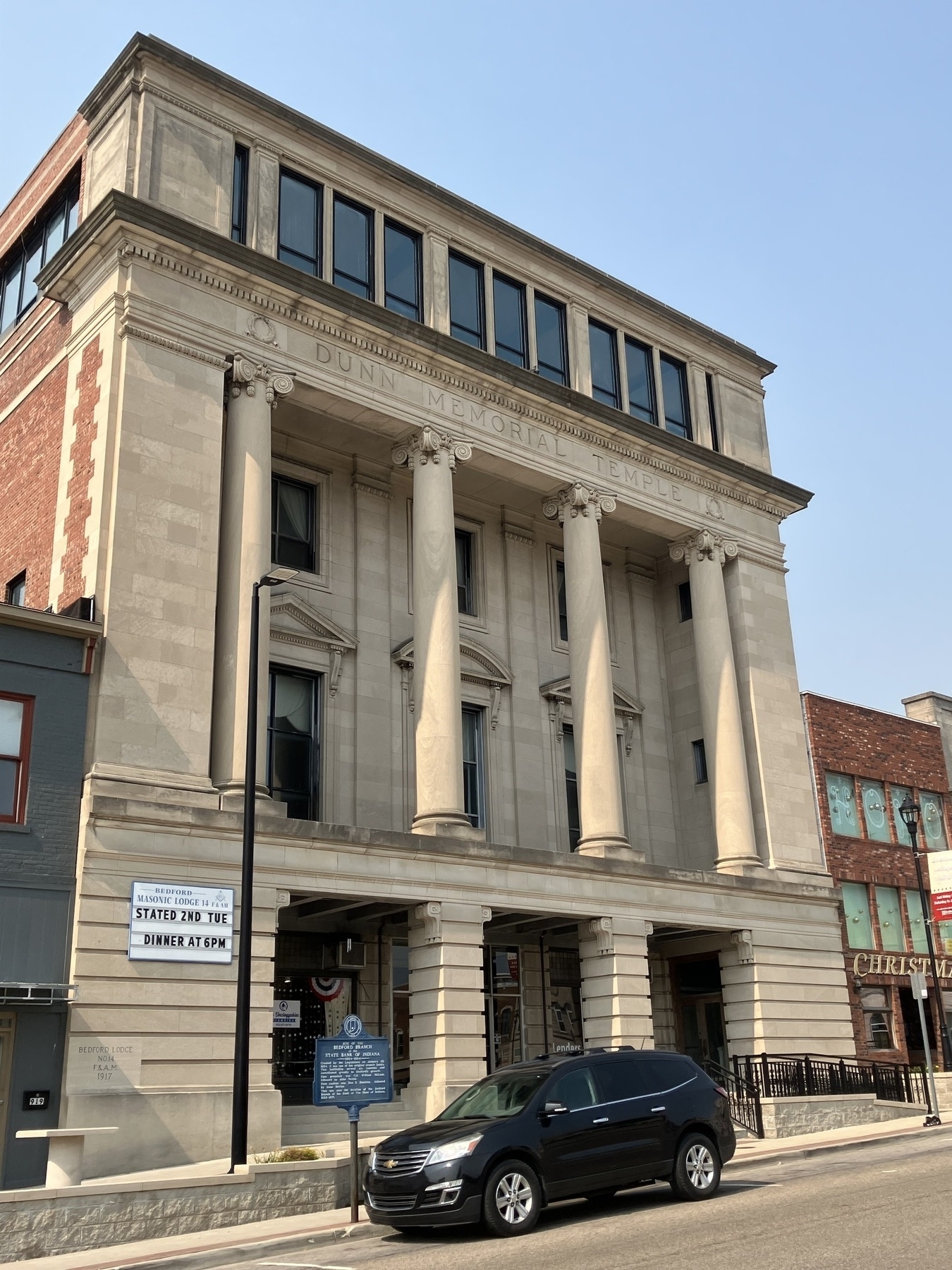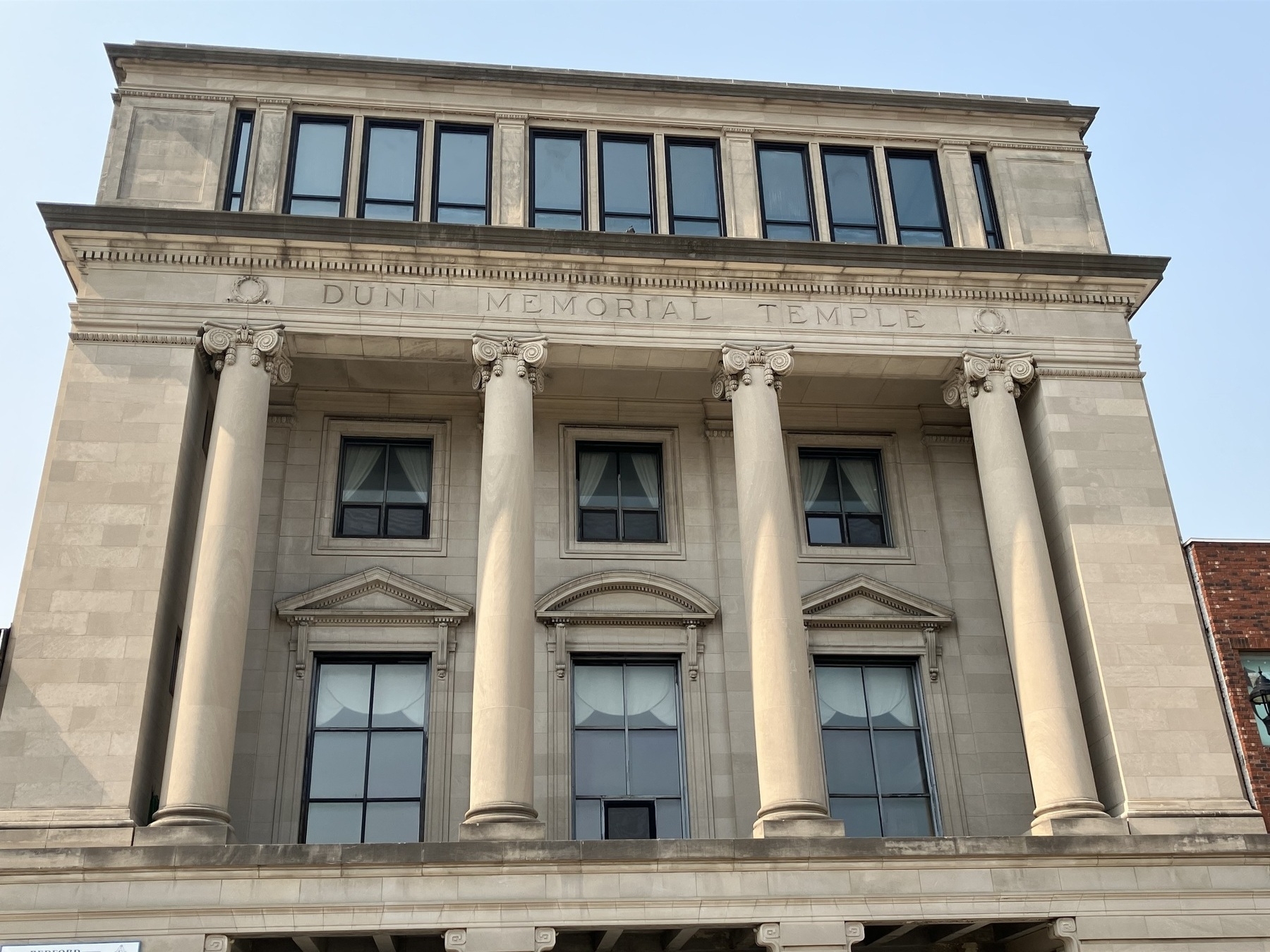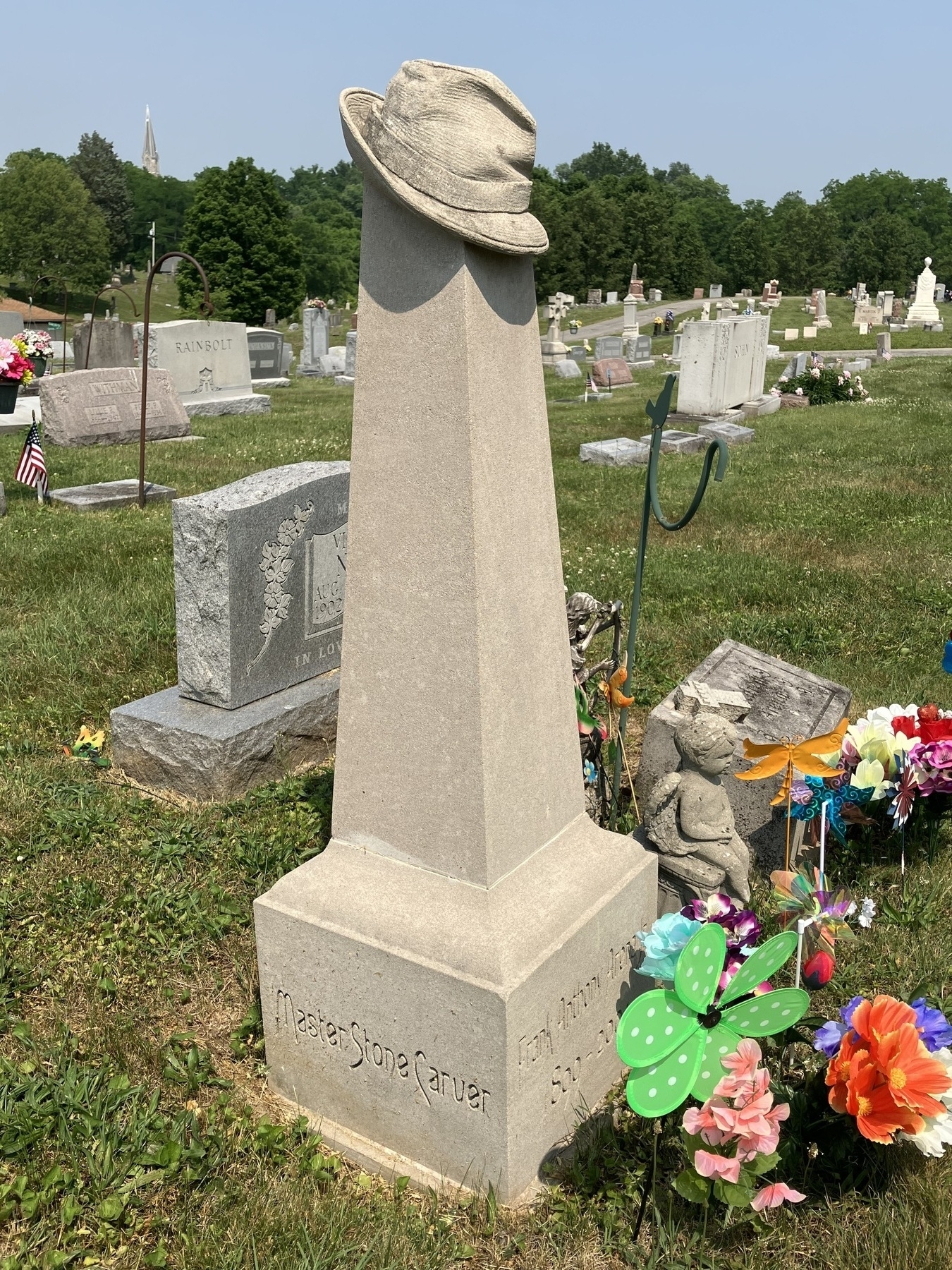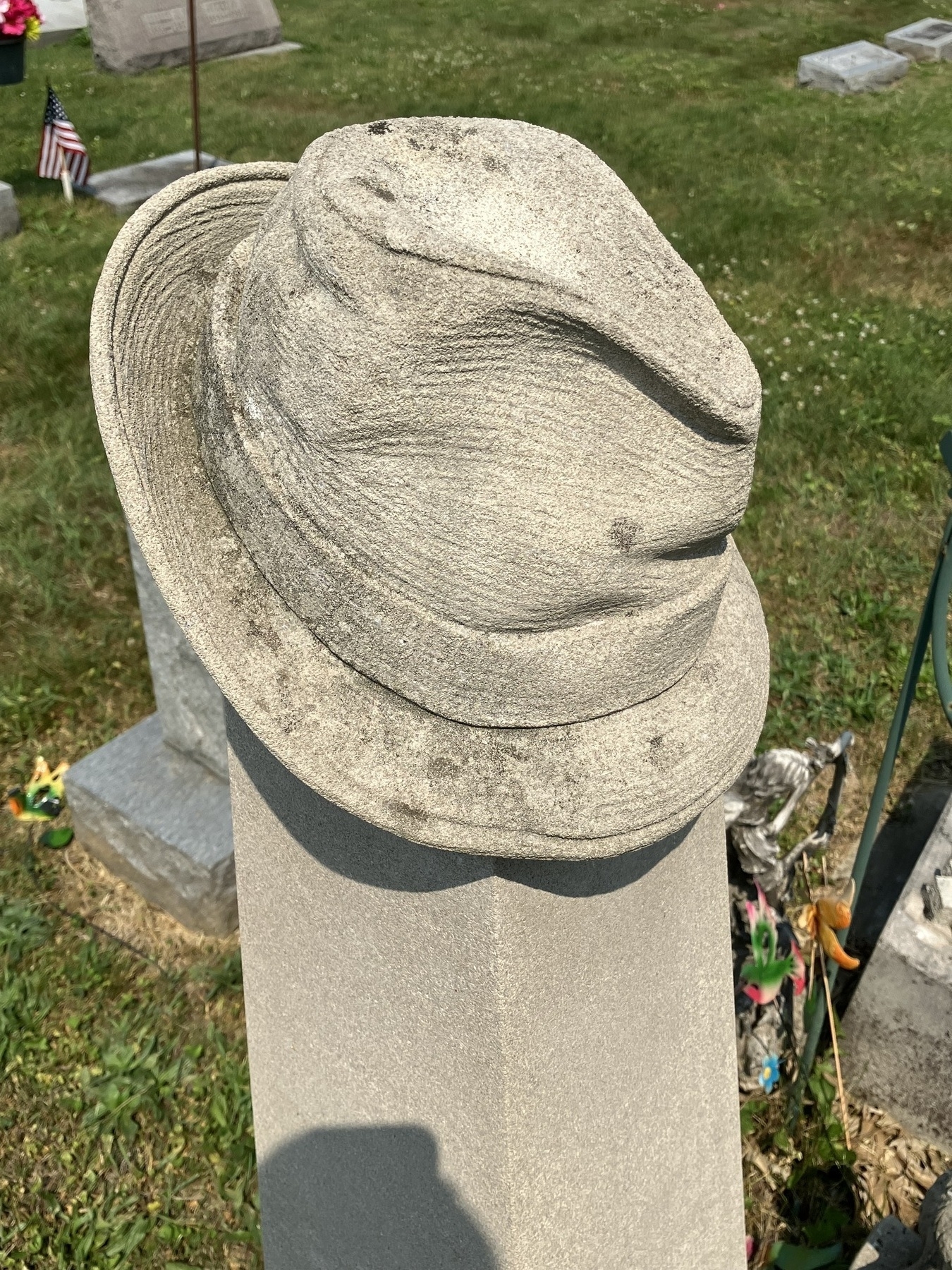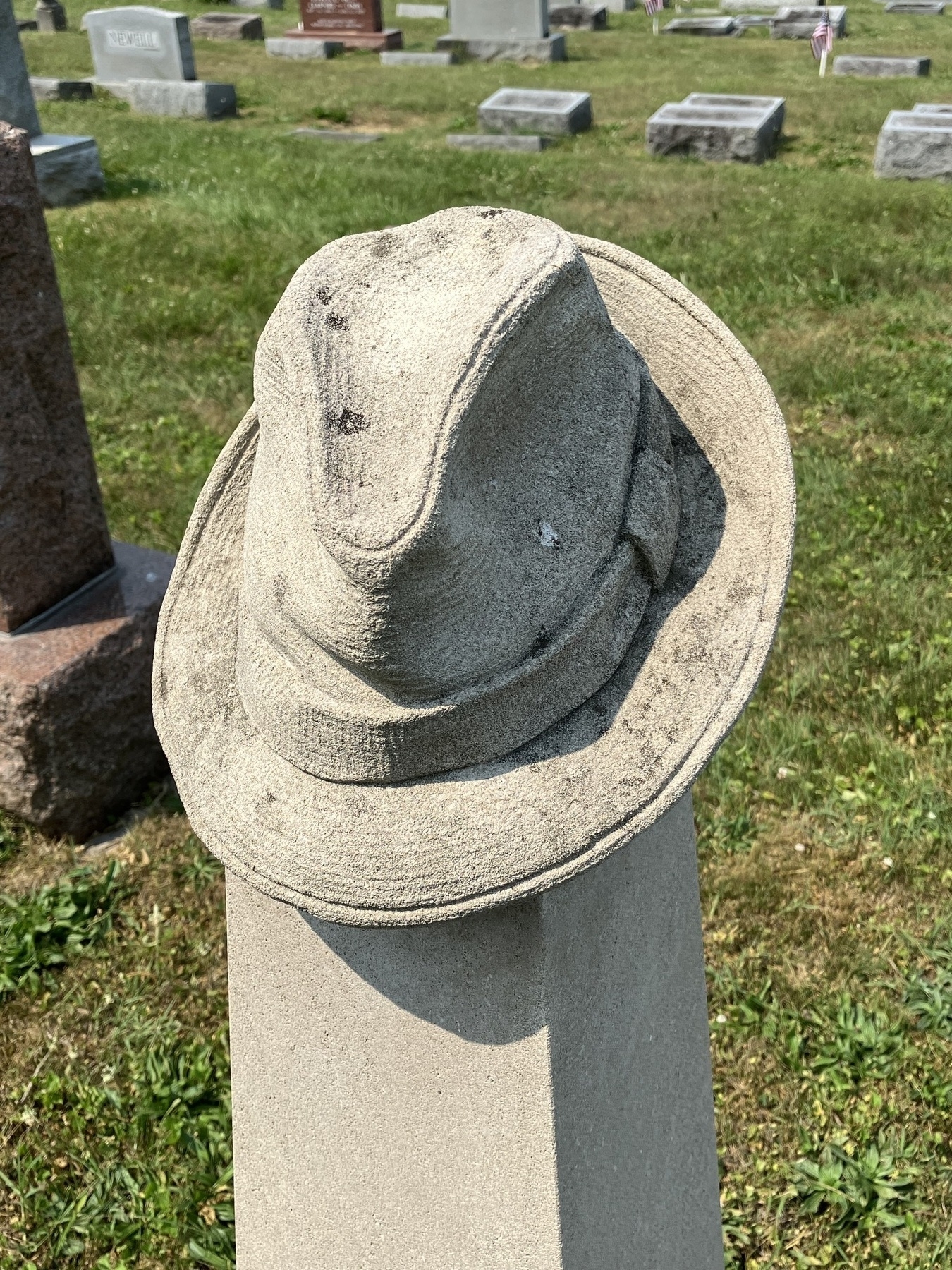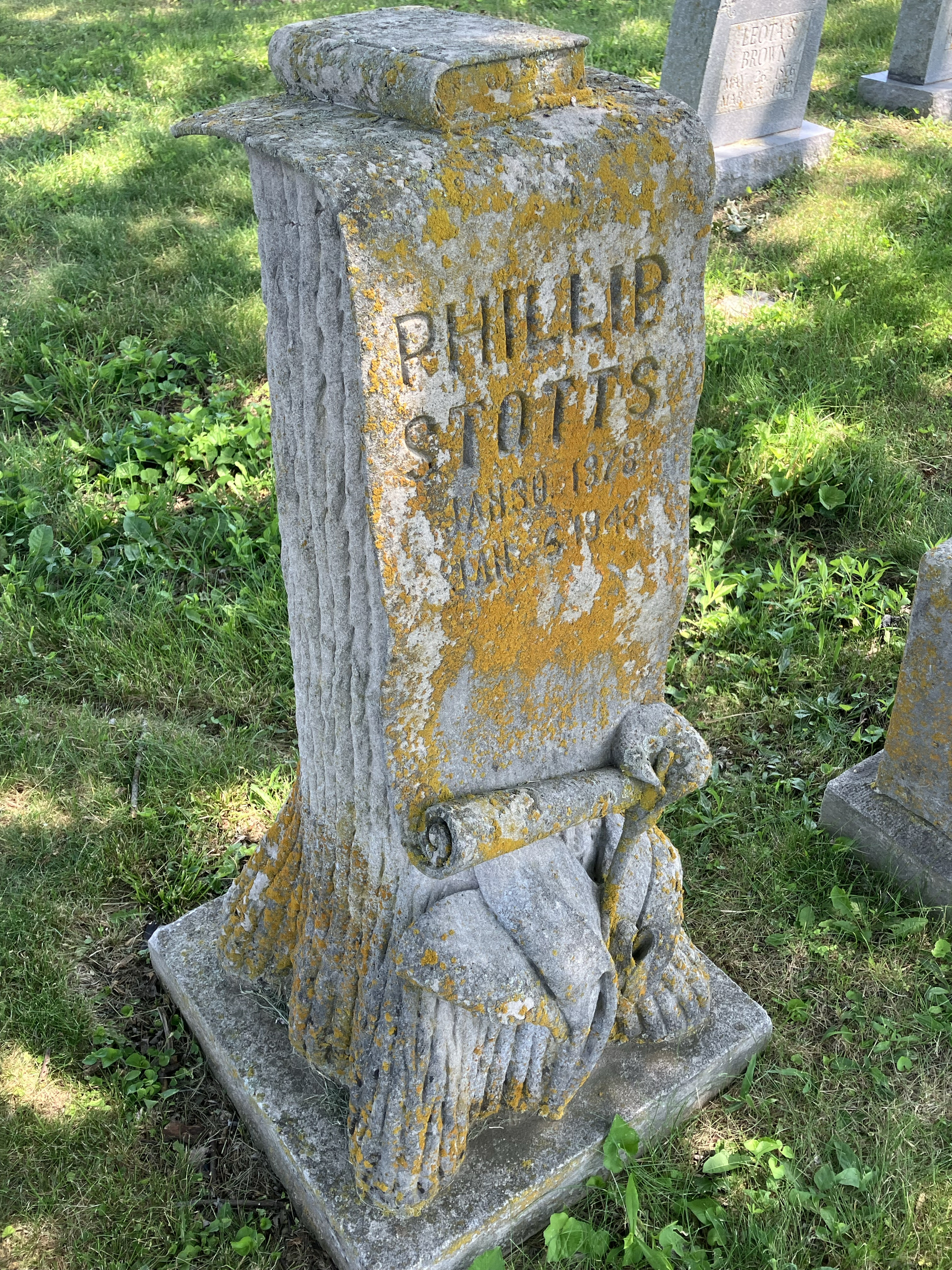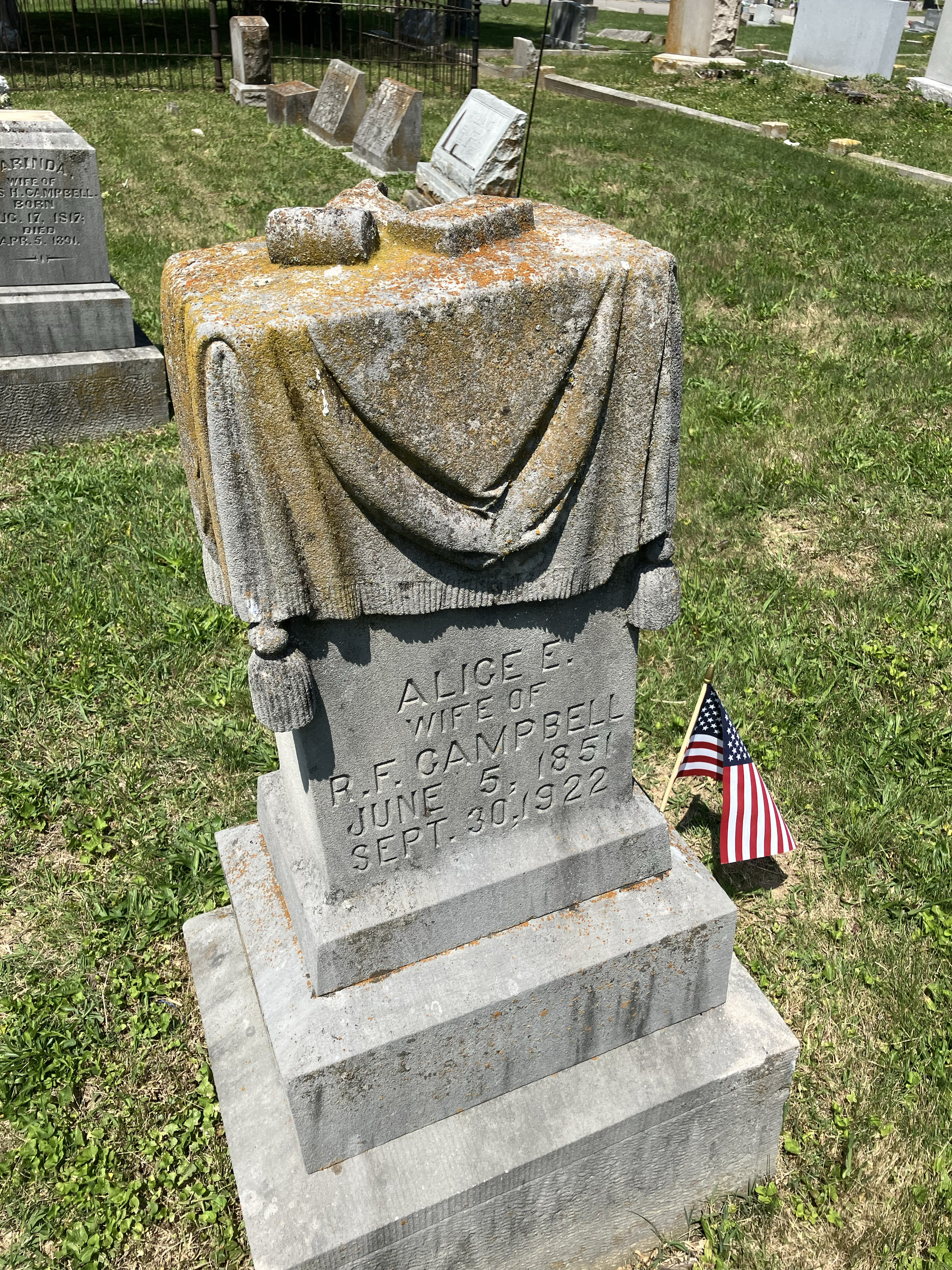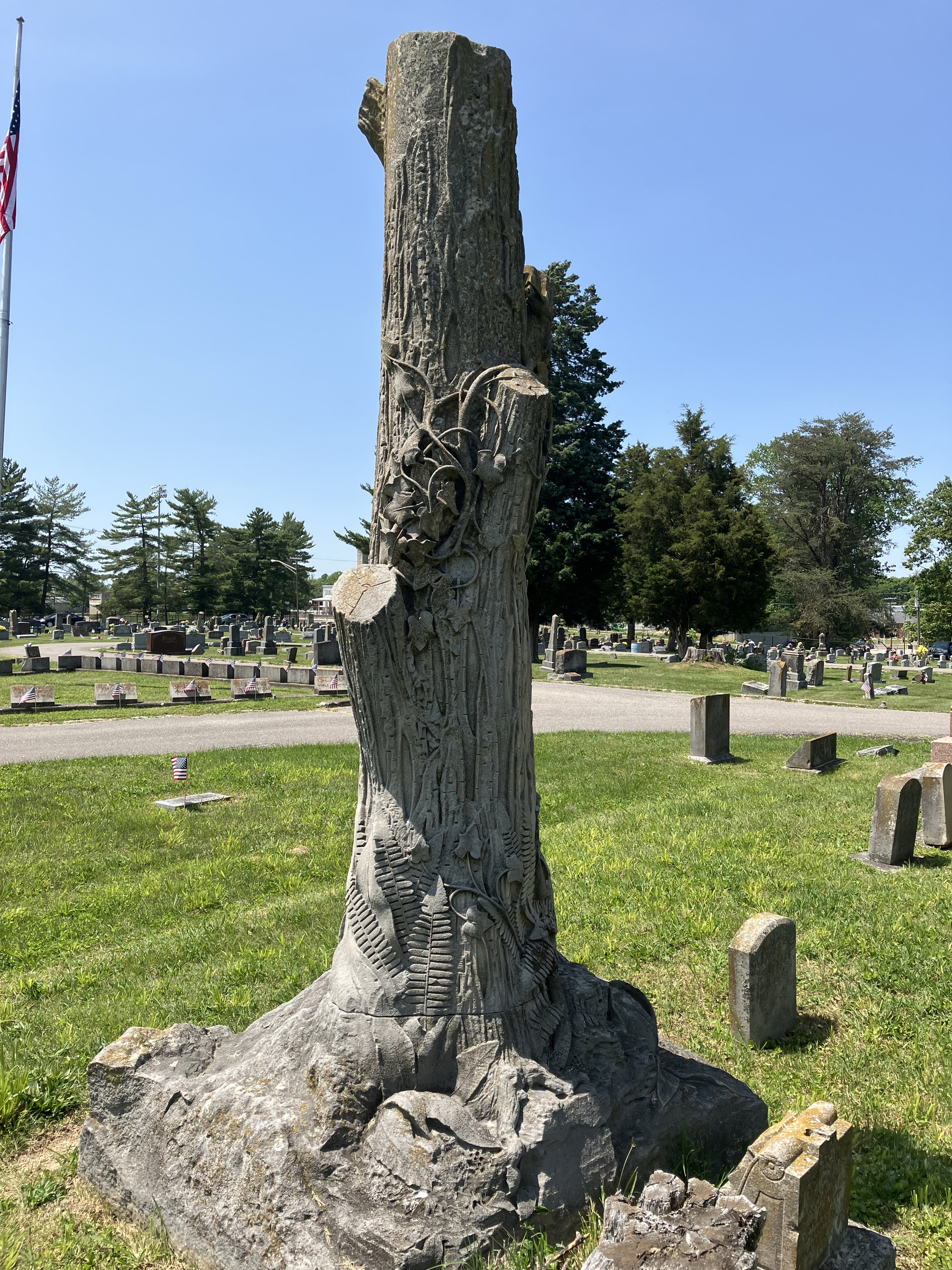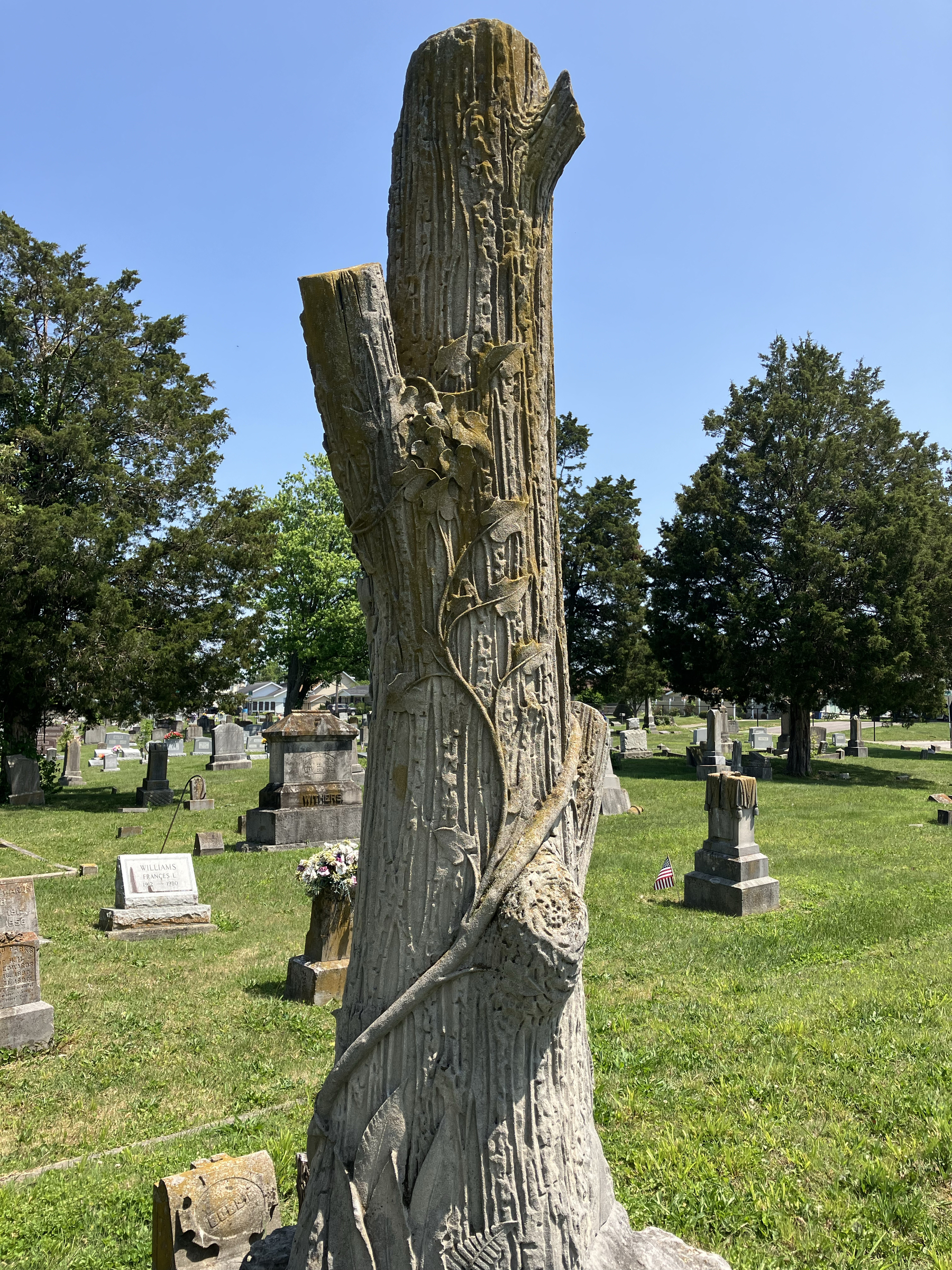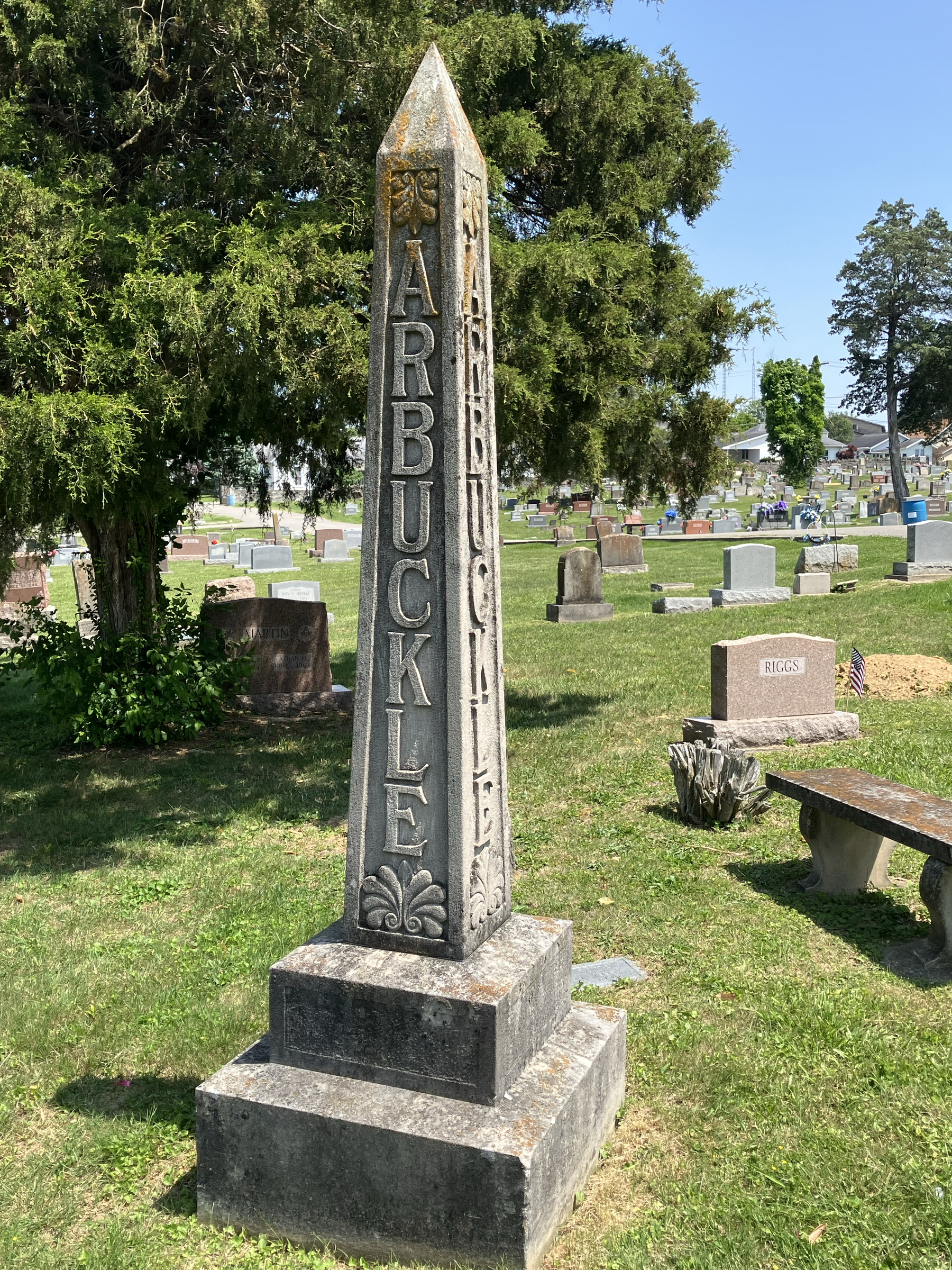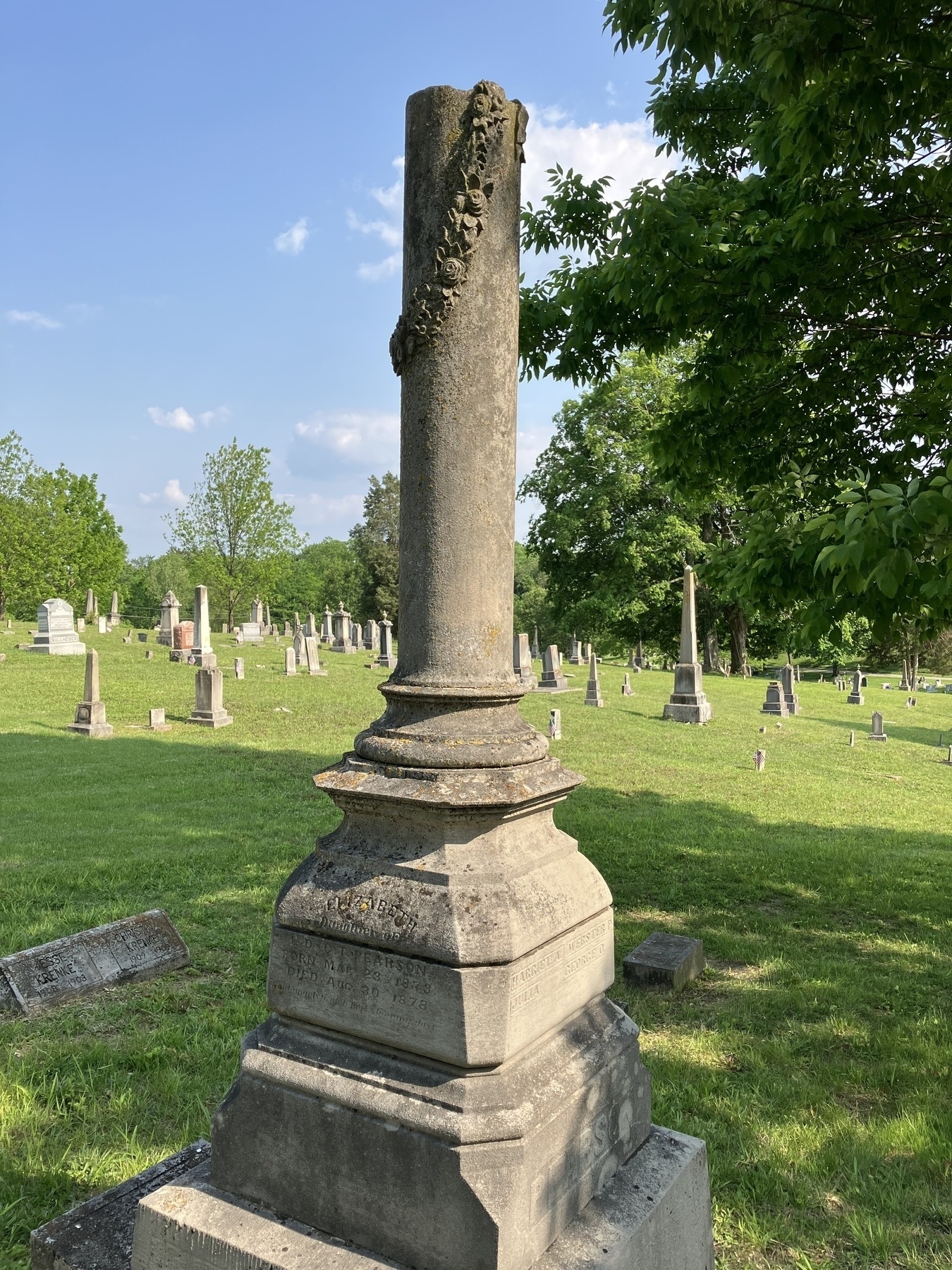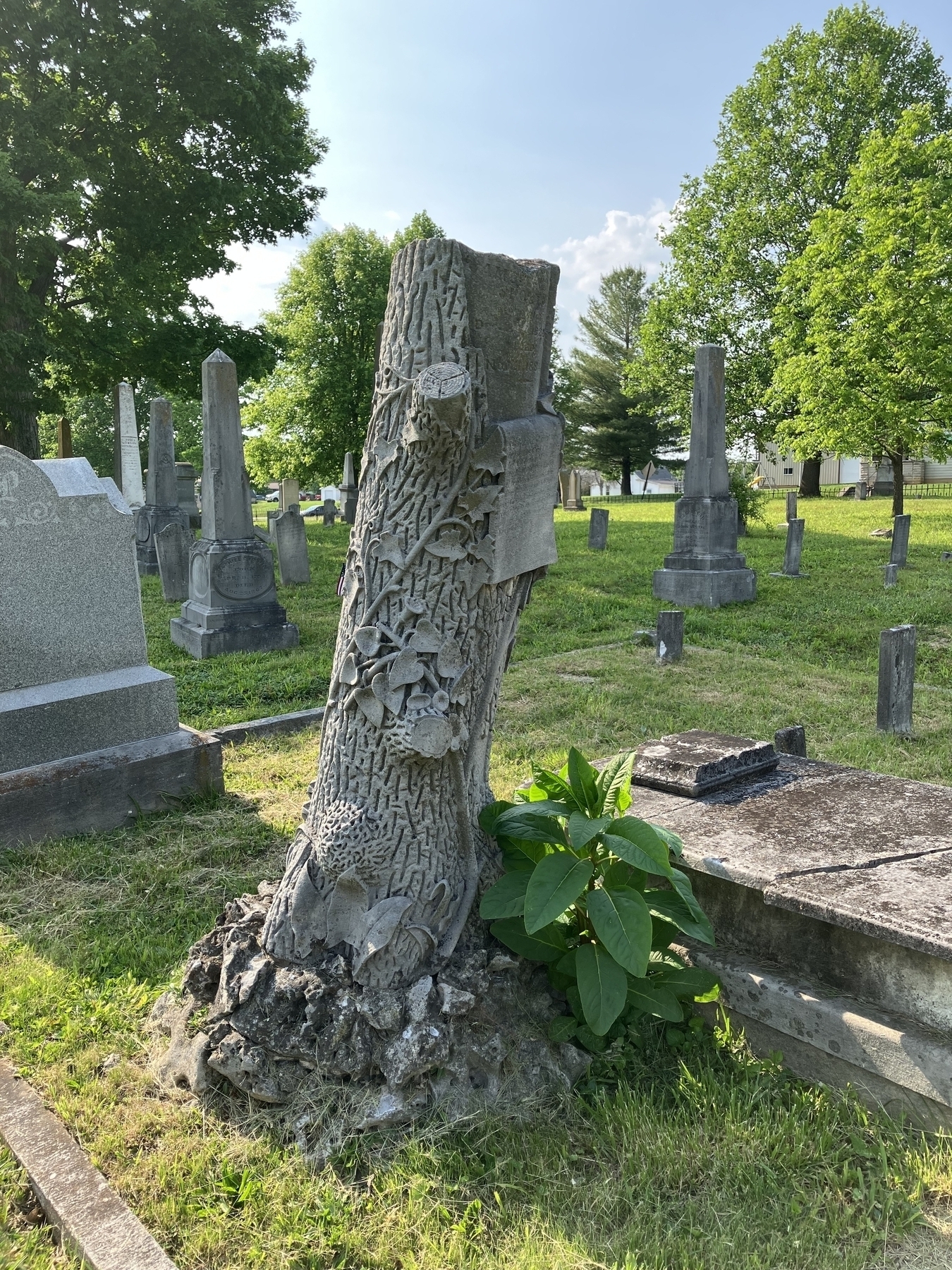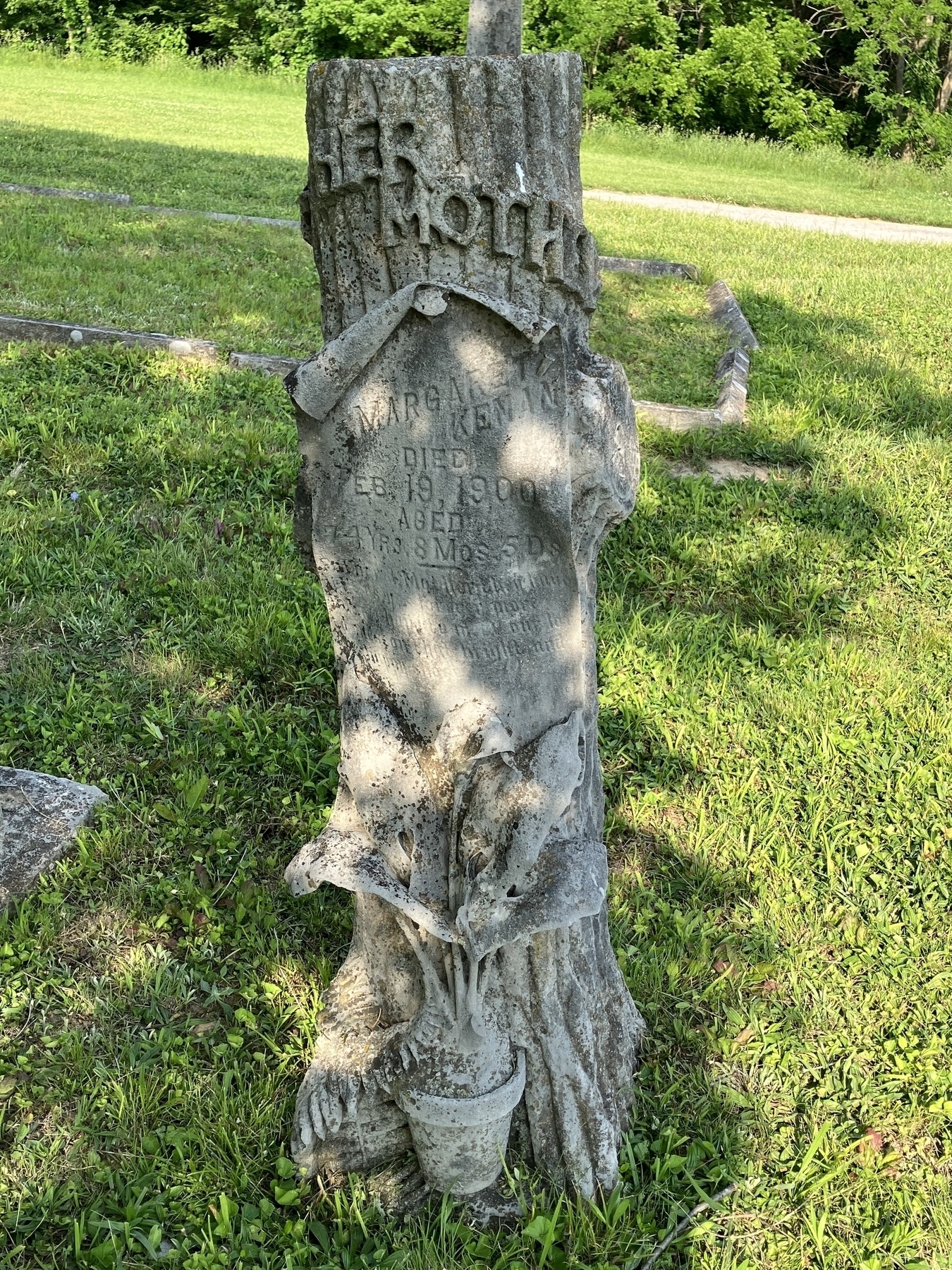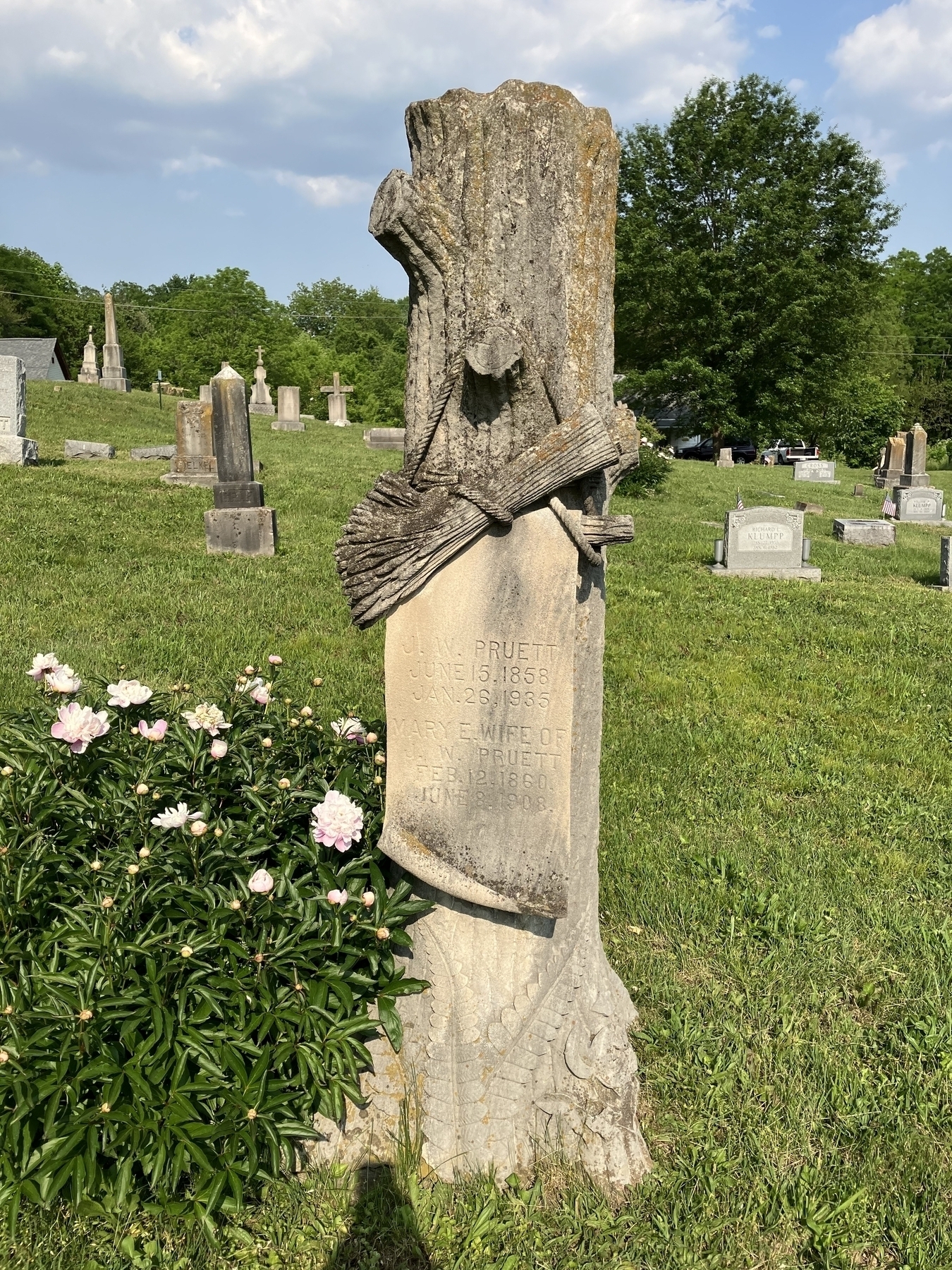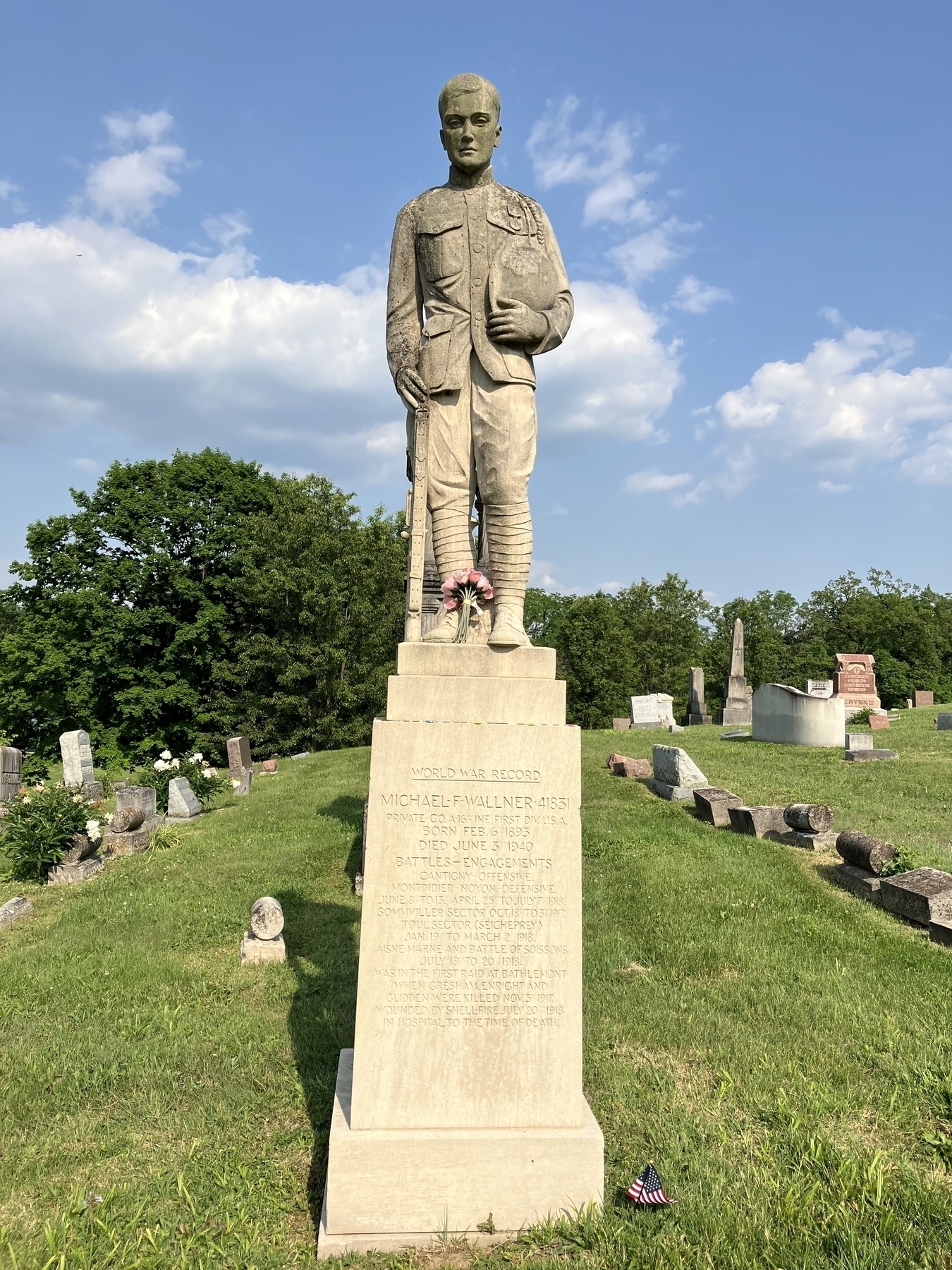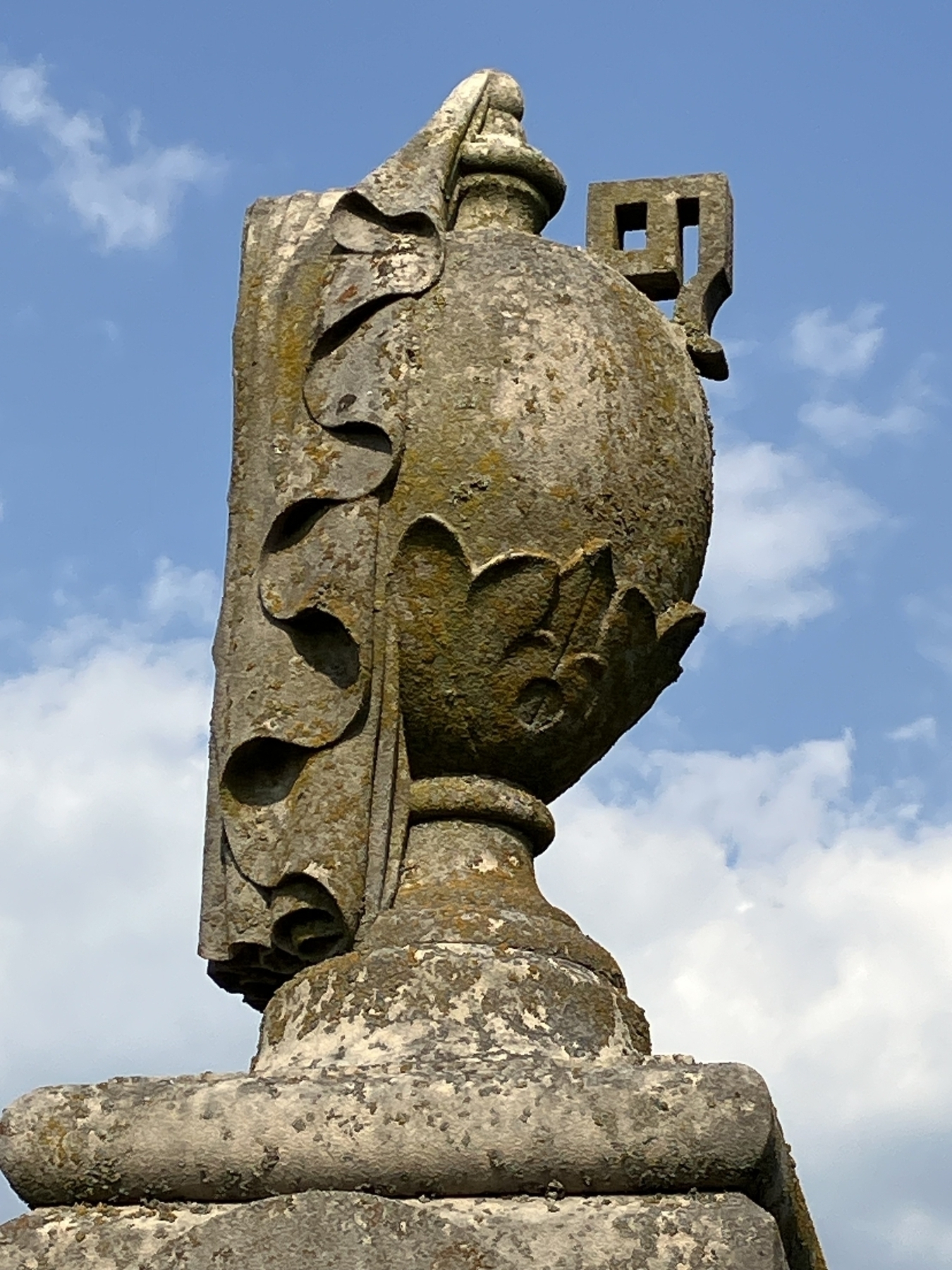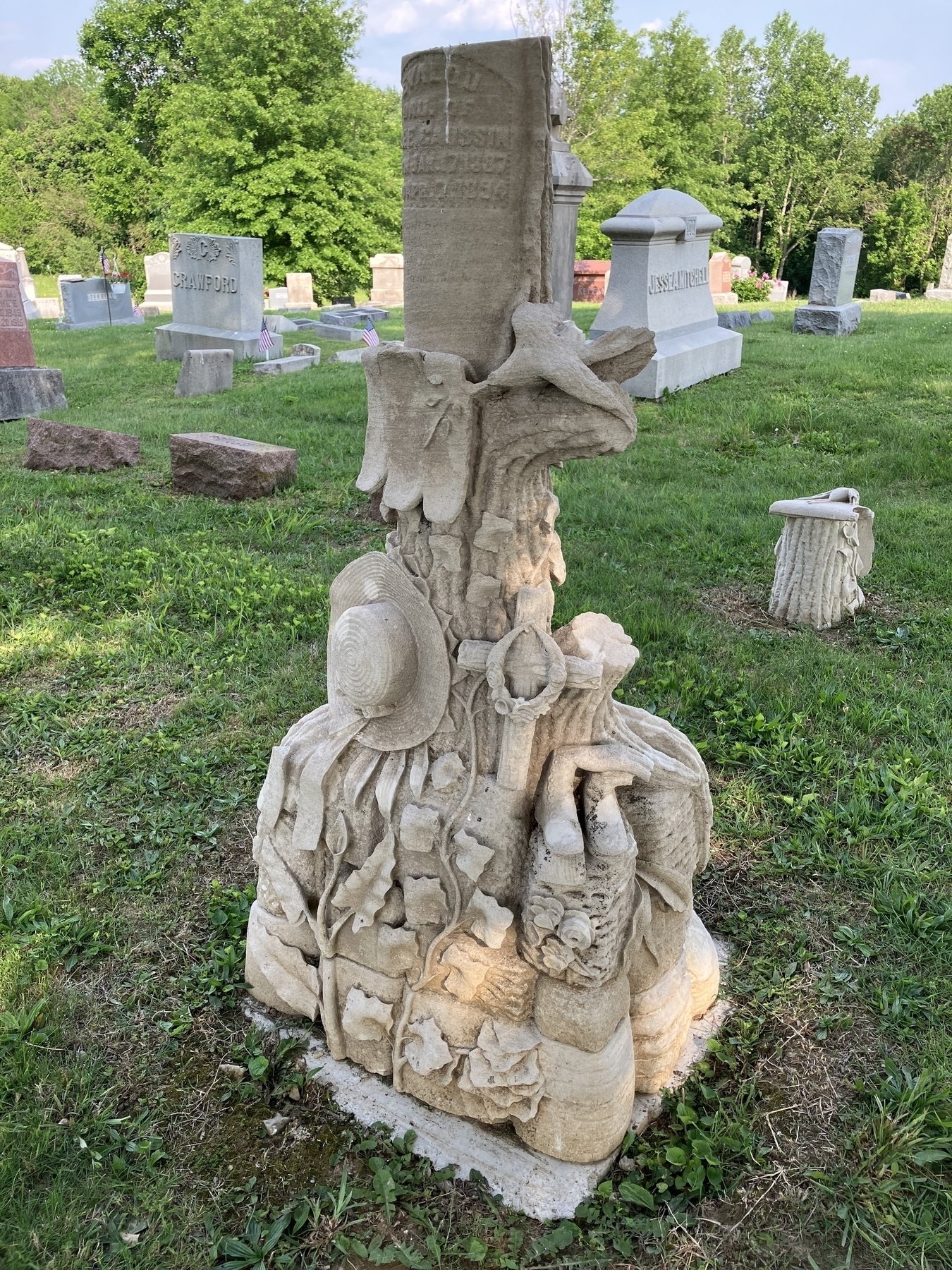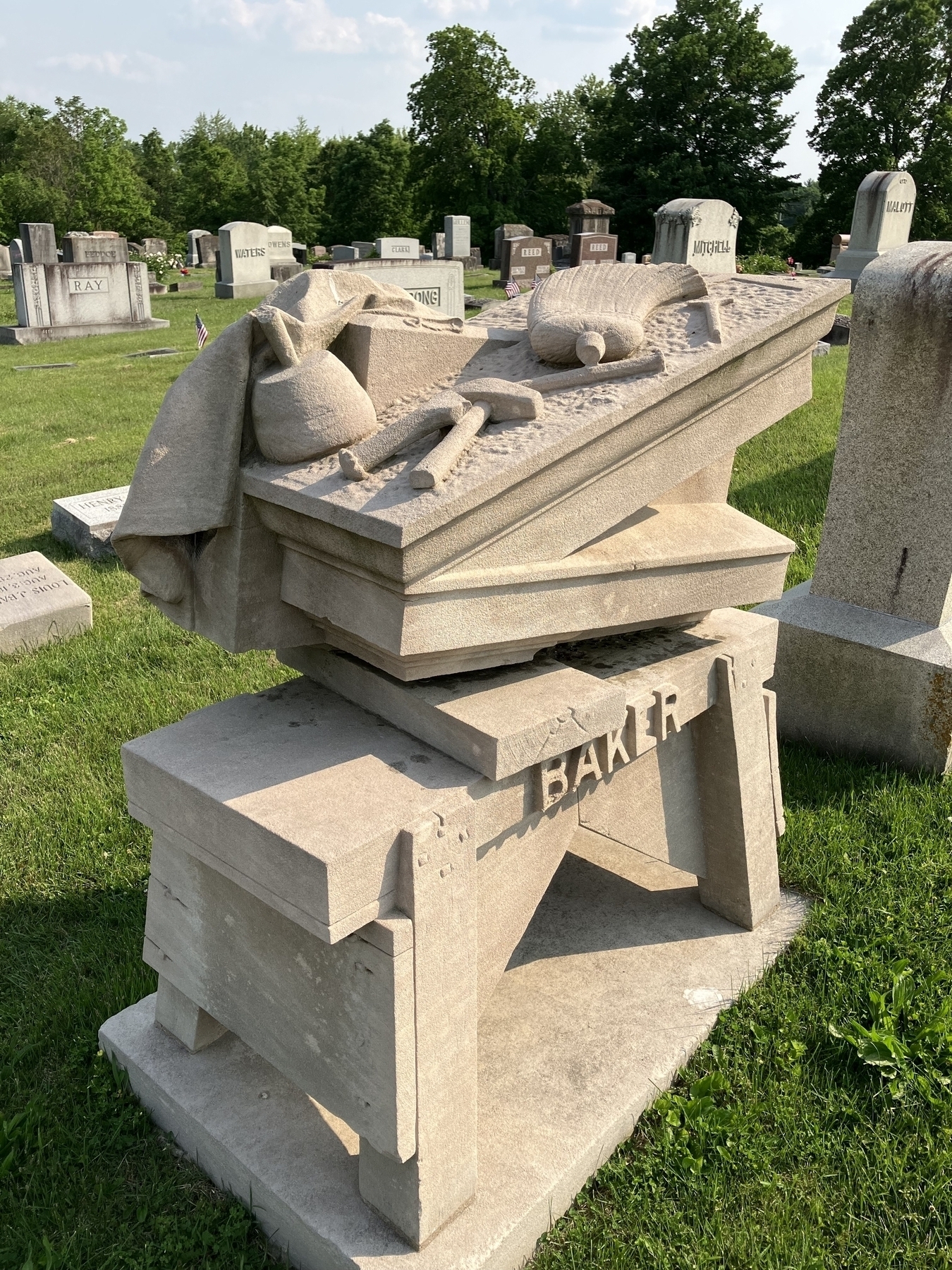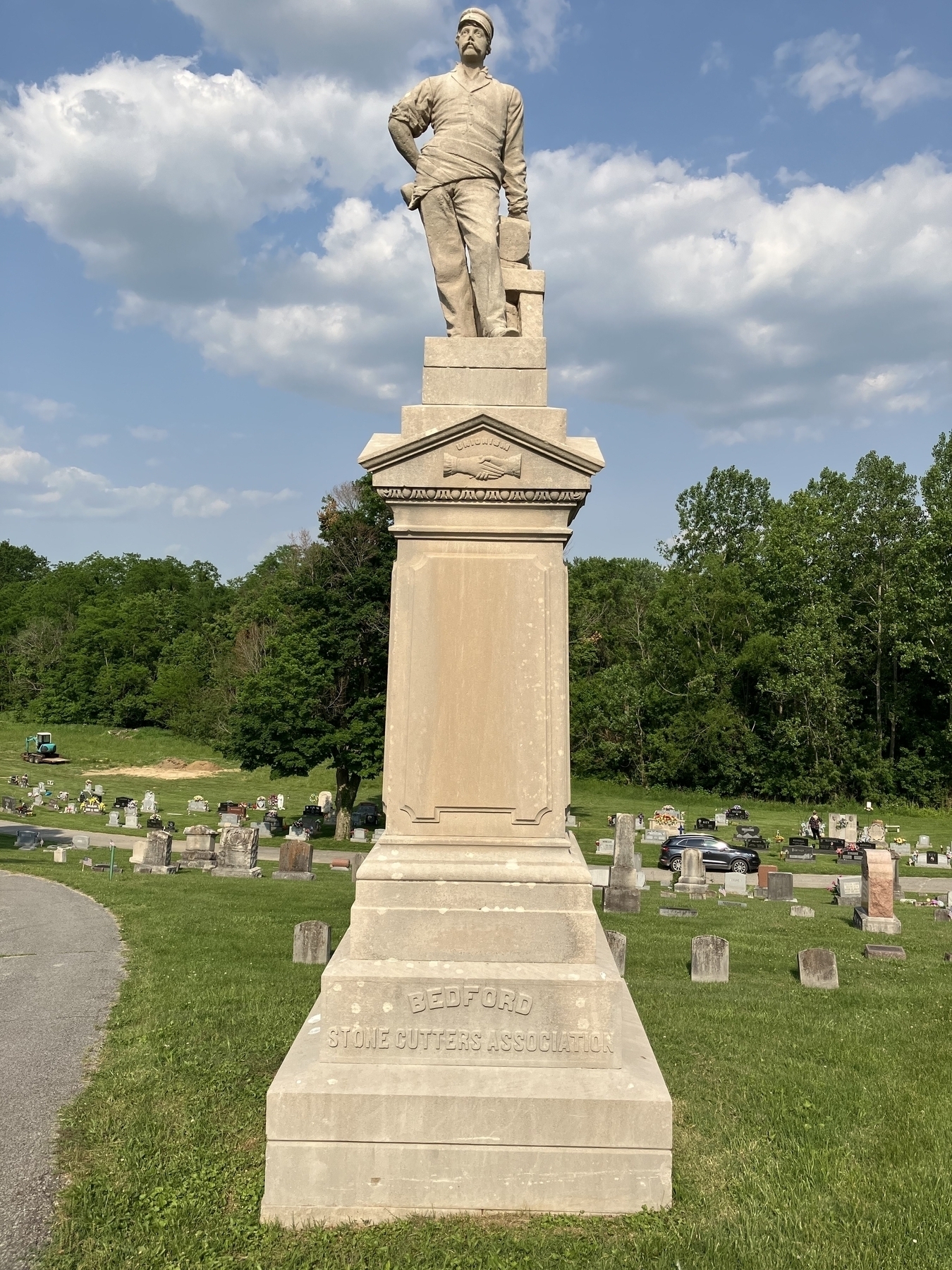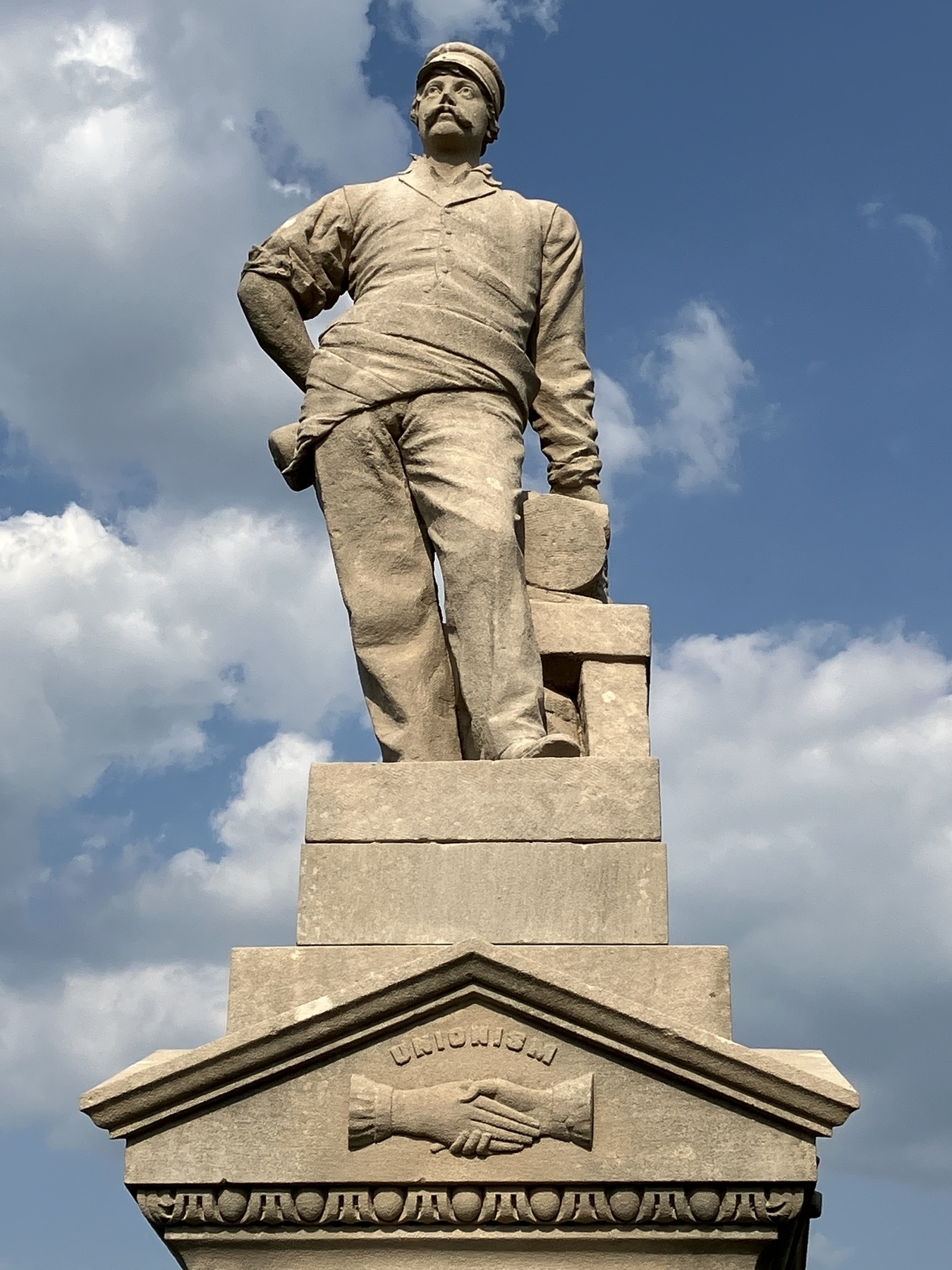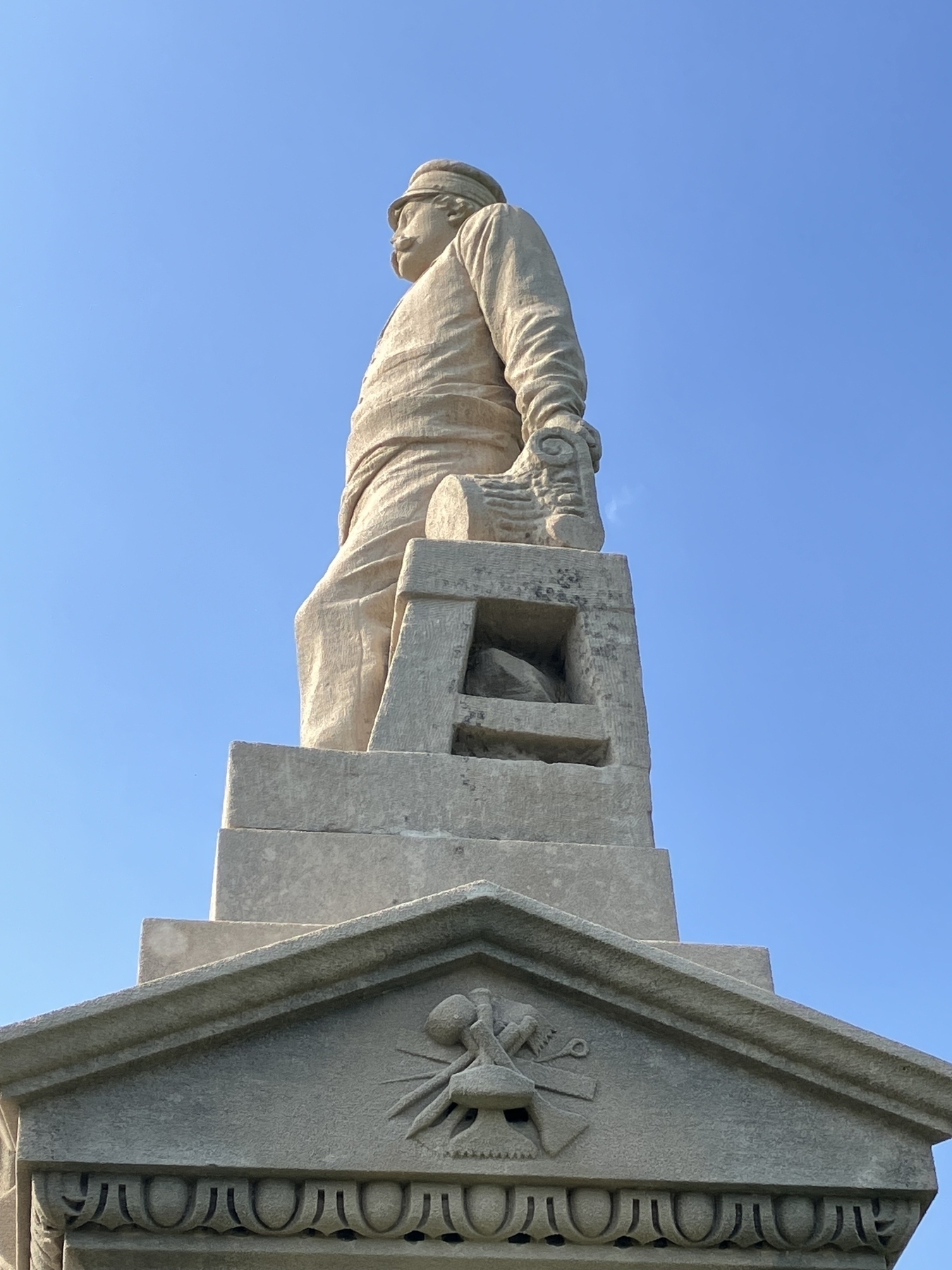It’s “Limestone Month” here in Bedford and this morning Rachel and I went on a tour of Green Hill Cemetery, the large cemetery in town that also has the most notable monuments and locally carved limestone folk art.
The tour guide was engaging and very knowledgeable. Unfortunately he was an old guy with a bad foot walking with a cane. And he can’t get volunteers to help. And there’s not enough money to cover the high costs of restoration and maintenance. And the number of available burial plots is decreasing and likewise their prospects for long-term revenue stream.
So the situation is not good. There were complaints about how people are less engaged with cemeteries now, buying fewer plots (presumably due to the rising popularity of cremation) and visiting the dead less regularly.
There are important things that could be lost if the trend continues, like historical knowledge and local, totally unique works of art. At the same time, I do not plan to be buried in the traditional manner; I would like some sort of green burial if local regulations are enlightened enough at the time of my death. Preferably I would be left atop a hill sacred to a local deity and consumed by crows. Barring that, at least no vault and no embalming.
So while I believe mainstream American burial customs reflect certain unhelpful beliefs and should be modified, I would not want to see Green Hill Cemetery fall into ruin. I don’t know what the answer is. Some cultures leave people buried for a period of time and then (once the memory of the person has faded over a few decades) inter the bones in a charnel house. This at least maintains the character of the land as a place of the dead without locking it up for the sake of long-forgotten souls who happened to live in an era of strong property rights.
Part of the problem they’re having is with maintenance of the monuments—precisely because they exist outside, in the weather and on shifting earth. Preserving them in a museum would be much easier. And, fascinating as some of the monuments may be, how many of them are simply the vanity of wealthy men etched in stone?
Part of me wants to volunteer to help and part of me wants the whole, unsustainable system to be replaced by something better.
